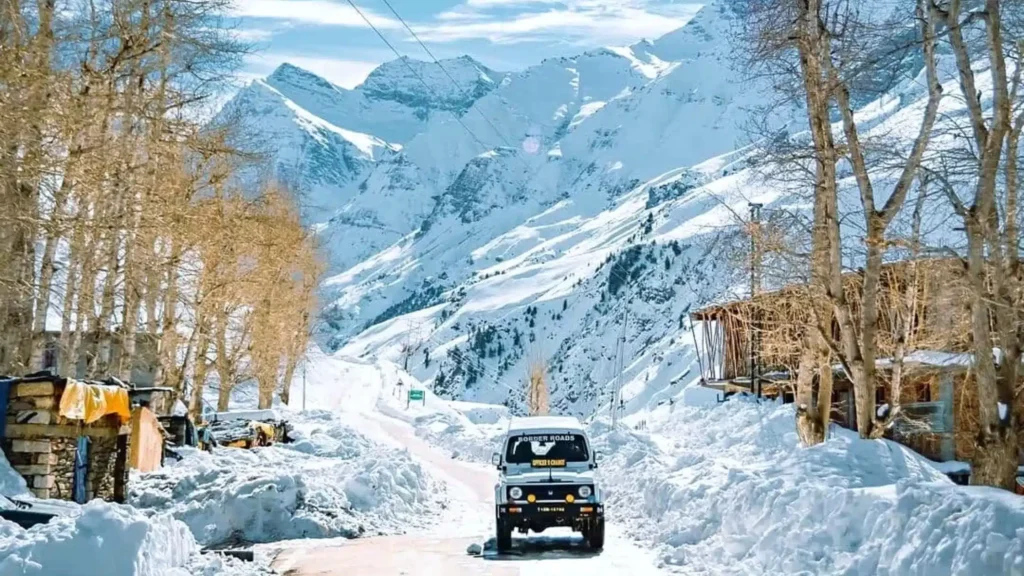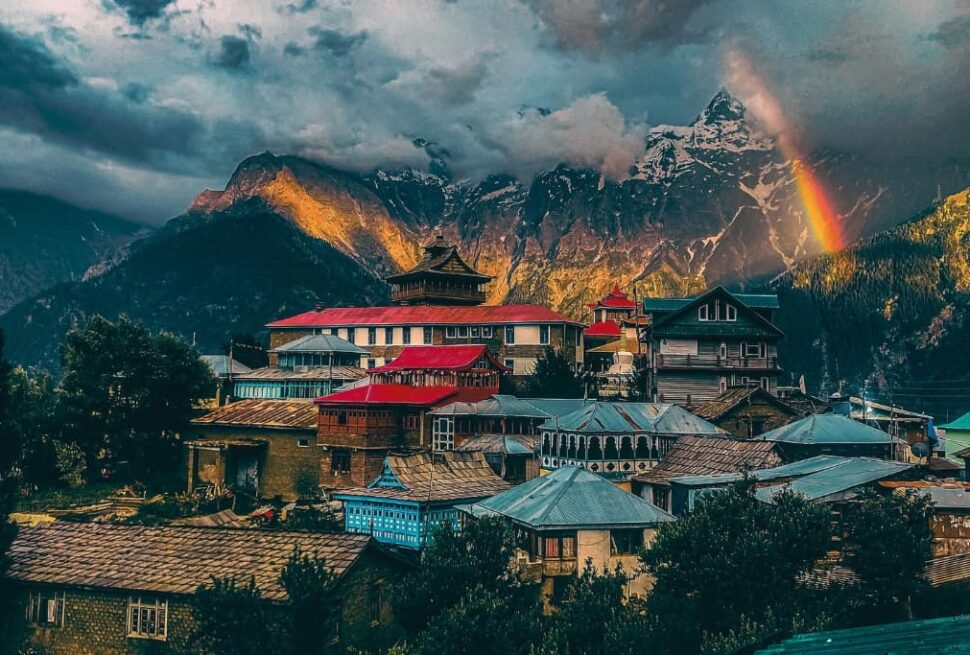Nestled in the northern part of India, Spiti Valley is a hidden gem that offers an unparalleled blend of raw natural beauty, ancient culture, and rugged adventure. Often referred to as “Little Tibet” due to its unique Buddhist culture and Tibetan influence, Spiti is a place where time seems to stand still. If you’re looking for a destination that combines stunning landscapes, spiritual experiences, and thrilling adventure, Spiti Valley is the perfect getaway.
Here’s why Spiti Valley should be on your travel radar and what you can expect when you visit this enchanting region.
Why Visit Spiti Valley?
Spiti Valley, located in the Himachal Pradesh state, is a high-altitude desert mountain valley. It’s bordered by the Himalayas to the north and the Tibetan Plateau to the east, making it one of the most remote and least explored places in India. The valley’s breathtaking landscapes, dotted with monasteries, crystal-clear rivers, and unique villages, offer an unforgettable experience for every kind of traveler—from those seeking adventure to those looking for spiritual solace.
The harsh yet beautiful terrain, with its barren hills, snow-capped peaks, and crystal-clear lakes, will leave you speechless. Additionally, the unique culture, untouched by time, makes it a perfect blend of natural beauty and cultural immersion.
Best Time to Visit Spiti Valley

Spiti is a year-round destination, but the best time to visit depends on your preferences:
- Summer (May to October): The months from May to October are considered ideal for visiting Spiti, with pleasant weather and clear roads. The summer season allows you to enjoy outdoor activities like trekking, biking, and sightseeing, and the valley comes alive with lush greenery after the melting snow.
- Winter (November to March): Winter in Spiti is harsh and the roads are usually closed due to snow. However, if you are an adventure seeker and want to experience the region’s extreme solitude and snow-covered landscapes, winter can be an unforgettable experience, especially for photography.
Things to Do in Spiti Valley
- Trekking and Hiking
Spiti Valley is a paradise for trekking enthusiasts, with numerous trails that offer stunning views of the surrounding mountains, valleys, and monasteries. Whether you’re an experienced trekker or a beginner, there’s a trek for you.
- Pin Parvati Pass Trek: One of the most popular and challenging treks in Spiti, this trek connects the Parvati Valley to Spiti, offering views of glaciers, alpine lakes, and rugged terrain.
- Chandratal Lake Trek: This moderate trek takes you to the picturesque Chandratal Lake, also known as the “Moon Lake,” which is famous for its crescent moon shape and stunning reflections of the surrounding mountains.
- Kunzum Pass Trek: Known for its panoramic views, the Kunzum Pass is located at the intersection of the Spiti and Kullu valleys and offers a rewarding experience for trekkers.
- Visit the Ancient Monasteries
Spiti is home to many ancient monasteries that are over a thousand years old, each offering a unique glimpse into the region’s rich Buddhist culture. These monasteries are located in remote areas, adding a sense of peace and spirituality to your journey.
- Key Monastery: Perched on a hilltop overlooking the valley, Key Monastery is the largest monastery in Spiti and one of the most important Buddhist institutions in the region. The monastery offers not only spiritual insight but also incredible views of the valley.
- Tabo Monastery: Known as the “Ajanta of the Himalayas,” Tabo Monastery is one of the oldest and most significant monasteries in the region. It is famous for its ancient murals, clay sculptures, and a serene environment perfect for meditation.
- Dhankar Monastery: This monastery is located at an altitude of 12,774 feet and offers spectacular views of the Spiti River and the surrounding mountains. It is considered a strategic point for understanding the historical and cultural significance of Spiti.
- Chandratal Lake
One of the most beautiful lakes in India, Chandratal Lake is located at an altitude of 4,300 meters. The lake, which is shaped like a crescent moon, is surrounded by rugged mountains and a stark landscape, making it one of the most photographed places in Spiti. The trek to Chandratal offers a tranquil escape and is a great way to connect with nature.
- Visit the Villages of Spiti
Spiti’s villages are some of the most isolated yet welcoming places in India. These villages have traditional Tibetan-style homes, monasteries, and farms, offering visitors a glimpse into the everyday lives of the locals.

- Kaza: The main town in Spiti, Kaza, is a good base for exploring the valley. It has a laid-back atmosphere, with small cafes, shops, and easy access to nearby attractions. The town is also home to the Kaza Monastery and Kye Monastery.
- Langza Village: Famous for its fossil-rich soil and the giant Buddha statue, Langza is a peaceful village that offers panoramic views of the mountains. It is perfect for those seeking peace and solitude.
- Komik Village: Known as one of the highest villages in Asia, Komik is located at an altitude of 4,500 meters. This village offers stunning views of the mountains and is an excellent spot for hiking and photography.
- Biking and Road Trips
The rugged roads and stunning landscapes make Spiti Valley a prime destination for bike enthusiasts and road trip lovers. The road trip to Spiti from Manali or Shimla is an adventure in itself. The narrow, winding roads, combined with high-altitude passes like the Kunzum Pass, offer an exhilarating experience.
Many tourists embark on biking trips to Spiti, where they can explore the remote areas and witness the region’s untouched beauty at their own pace. Whether you’re biking through the stunning landscapes or just soaking in the beauty from a car window, the journey is nothing short of breathtaking.
- Stargazing in Spiti
Spiti Valley is known for its clear skies, making it an excellent destination for stargazing. Due to its remote location and minimal light pollution, the stars shine brightly over Spiti. You can spend the night under the stars, enjoying the serene atmosphere and the beauty of the Milky Way stretching across the sky. Chandratal Lake is one of the best places to stargaze.
How to Reach Spiti Valley
Spiti Valley is well connected by road, but due to its high altitude, reaching the valley can be challenging during the winter months. The best way to reach Spiti is by road from Manali or Shimla.
- By Road: The road trip from Manali to Spiti is one of the most scenic and adventurous journeys in India. The route from Manali to Kaza takes you through high-altitude passes like the Rohtang Pass and Kunzum Pass.
- By Air: The nearest airport to Spiti is in Bhuntar, near Kullu. However, the flight options are limited, and it’s best to travel by road from there.
- By Train: The nearest major railway station is in Shimla, and from there, you can take a bus or hire a taxi to reach Spiti.
Conclusion
Spiti Valley is a land of stark beauty, where serenity and adventure coexist in perfect harmony. From trekking and camping in its rugged terrains to exploring ancient monasteries, Spiti offers a unique and unforgettable experience. Whether you are looking for solitude, adventure, or a deep connection with Tibetan culture, Spiti is a place that will leave you mesmerized and yearning for more. If you’re an intrepid traveler ready to explore the unexplored, Spiti Valley should be on your bucket list.




